STEFAN LOCHNER –
A FRAGILE IDENTITY
When Albrecht Dürer came and spent two weeks in Cologne in 1520, within a few days he had one particular artwork shown to him twice – in exchange for a tip: “I have given 3 silver pennies, and again 2 silver pennies to have the painting opened up that master Stefan of Cologne has done.” Since 1823 this has been identified as the Altar of the City Patrons, which is now in the keeping of the cathedral. The “Master Stefan” Dürer mentions has been established as the painter Stefan Lochner, who is to be found in the city’s records, and an entire oeuvre has been worked out on the basis of stylistic comparisons with the cathedral painting. This historical construction cannot be proved in all certainty, but it remains highly plausible. With that the name Stefan Lochner has remained synonymous the world over with the quality and radiance of mediaeval painting in Cologne.
It appears that Lochner was born c. 1400/1410 by Lake Constance. But rather than taking inspiration from the local painting, his main influence was Netherlandish art. He skilfully combined the naturalism of Flemish painting with the charm and mystical spirit found in Cologne paintings, such as those by the Master of St Veronica. Lochner is first known to have worked in Cologne in 1442 as a decorative painter. Two years later he purchased two houses at considerable expense. They were on the corner of Quatermarkt/In der Höhle, just a stone’s throw from the present museum. After Lochner and his wife Lisbeth fell prey to the terrible plague epidemic of 1451, the magnificent double house was signed over to a creditor in early 1452. Later it was to become the home of other painters, such as Bartholomäus Bruyn the elder (Room 13).
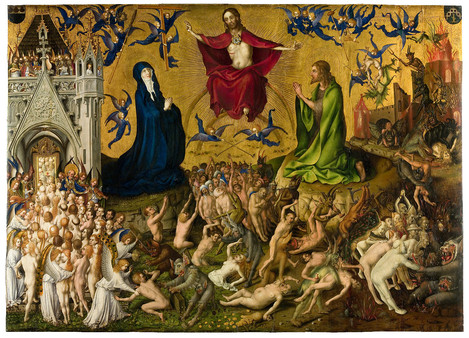 Stefan Lochner (Hagnau c. 1400/1410 – 1451 Cologne): The Last Judgement, c. 1435. Oak, 124.5 x 173 cm (panel size). Collection of Ferdinand Franz Wallraf. WRM 0066. Photo: Rheinisches Bildarchiv Köln
Stefan Lochner (Hagnau c. 1400/1410 – 1451 Cologne): The Last Judgement, c. 1435. Oak, 124.5 x 173 cm (panel size). Collection of Ferdinand Franz Wallraf. WRM 0066. Photo: Rheinisches Bildarchiv Köln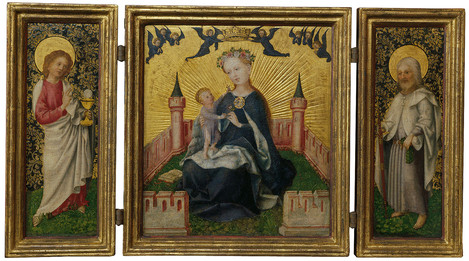 Stefan Lochner (Hagnau c. 1400/1410 – 1451 Cologne): Triptych with the Virgin in the Garden of Paradise, c. 1445 – 1450. Oak, 31 x 27.5 cm (central panel). Acquired in 1914 as a gift from Richard von Schnitzler. WRM 0070. Photo: Rheinisches Bildarchiv Köln
Stefan Lochner (Hagnau c. 1400/1410 – 1451 Cologne): Triptych with the Virgin in the Garden of Paradise, c. 1445 – 1450. Oak, 31 x 27.5 cm (central panel). Acquired in 1914 as a gift from Richard von Schnitzler. WRM 0070. Photo: Rheinisches Bildarchiv Köln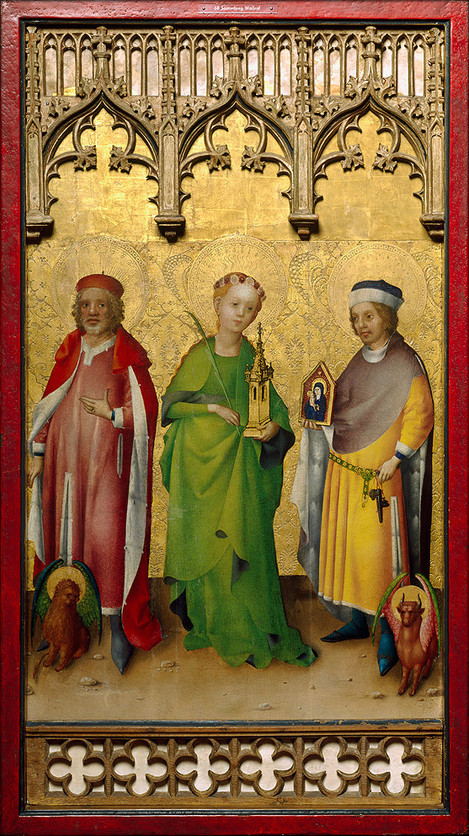 Stefan Lochner (Hagnau c. 1400/1410 – 1451 Cologne): The Saints Mark, Luke and Barbara, c. 1445 – 1450. Oak, 100.5 x 58 cm. Collection of Ferdinand Franz Wallraf. WRM 0068. Photo: Rheinisches Bildarchiv Köln
Stefan Lochner (Hagnau c. 1400/1410 – 1451 Cologne): The Saints Mark, Luke and Barbara, c. 1445 – 1450. Oak, 100.5 x 58 cm. Collection of Ferdinand Franz Wallraf. WRM 0068. Photo: Rheinisches Bildarchiv Köln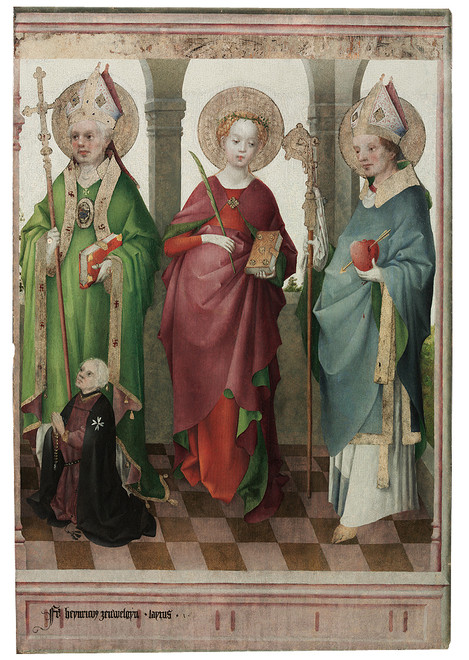 Stefan Lochner (Hagnau c. 1400/1410 – 1451 Cologne): The Saints Ambrose, Cecilia and Augustine with Donor, c. 1445 – 1450. Oak, 100.5 x 58 cm. Collection of Ferdinand Franz Wallraf. WRM 0069. Photo: Rheinisches Bildarchiv Köln
Stefan Lochner (Hagnau c. 1400/1410 – 1451 Cologne): The Saints Ambrose, Cecilia and Augustine with Donor, c. 1445 – 1450. Oak, 100.5 x 58 cm. Collection of Ferdinand Franz Wallraf. WRM 0069. Photo: Rheinisches Bildarchiv Köln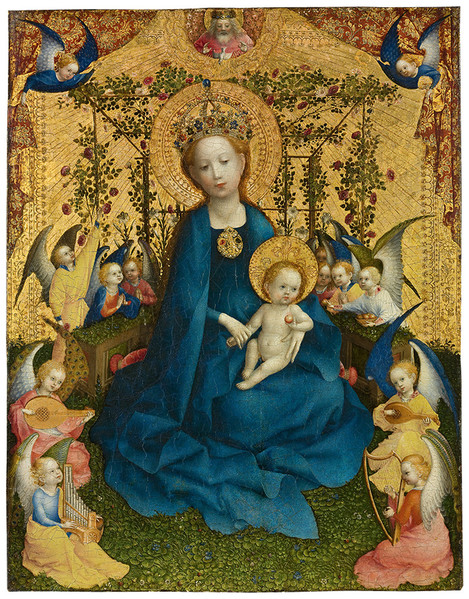 Stefan Lochner (Hagnau c. 1400/1410 – 1451 Cologne): Madonna of the Rose Bower, c. 1440 – 1442. Oak, 50.5 x 40 cm. Acquired in 1848 as a bequest from F. J. von Herwegh. WRM 0067. Photo: Rheinisches Bildarchiv Köln
Stefan Lochner (Hagnau c. 1400/1410 – 1451 Cologne): Madonna of the Rose Bower, c. 1440 – 1442. Oak, 50.5 x 40 cm. Acquired in 1848 as a bequest from F. J. von Herwegh. WRM 0067. Photo: Rheinisches Bildarchiv Köln


